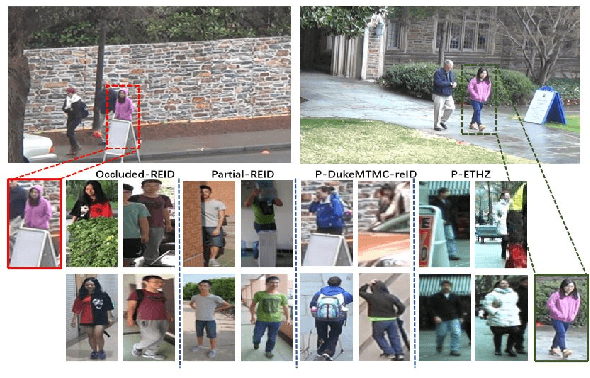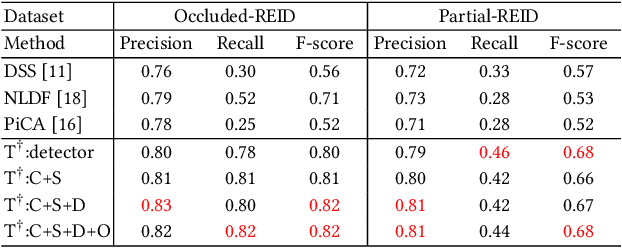Jiaxuan Zhuo
A Novel Teacher-Student Learning Framework For Occluded Person Re-Identification
Jul 07, 2019



Abstract:Person re-identification (re-id) has made great progress in recent years, but occlusion is still a challenging problem which significantly degenerates the identification performance. In this paper, we design a teacher-student learning framework to learn an occlusion-robust model from the full-body person domain to the occluded person domain. Notably, the teacher network only uses large-scale full-body person data to simulate the learning process of occluded person re-id. Based on the teacher network, the student network then trains a better model by using inadequate real-world occluded person data. In order to transfer more knowledge from the teacher network to the student network, we equip the proposed framework with a co-saliency network and a cross-domain simulator. The co-saliency network extracts the backbone features, and two separated collaborative branches are followed by the backbone. One branch is a classification branch for identity recognition and the other is a co-saliency branch for guiding the network to highlight meaningful parts without any manual annotation. The cross-domain simulator generates artificial occlusions on full-body person data under a growing probability so that the teacher network could train a cross-domain model by observing more and more occluded cases. Experiments on four occluded person re-id benchmarks show that our method outperforms other state-of-the-art methods.
Occluded Person Re-identification
Apr 20, 2018



Abstract:Person re-identification (re-id) suffers from a serious occlusion problem when applied to crowded public places. In this paper, we propose to retrieve a full-body person image by using a person image with occlusions. This differs significantly from the conventional person re-id problem where it is assumed that person images are detected without any occlusion. We thus call this new problem the occluded person re-identitification. To address this new problem, we propose a novel Attention Framework of Person Body (AFPB) based on deep learning, consisting of 1) an Occlusion Simulator (OS) which automatically generates artificial occlusions for full-body person images, and 2) multi-task losses that force the neural network not only to discriminate a person's identity but also to determine whether a sample is from the occluded data distribution or the full-body data distribution. Experiments on a new occluded person re-id dataset and three existing benchmarks modified to include full-body person images and occluded person images show the superiority of the proposed method.
 Add to Chrome
Add to Chrome Add to Firefox
Add to Firefox Add to Edge
Add to Edge